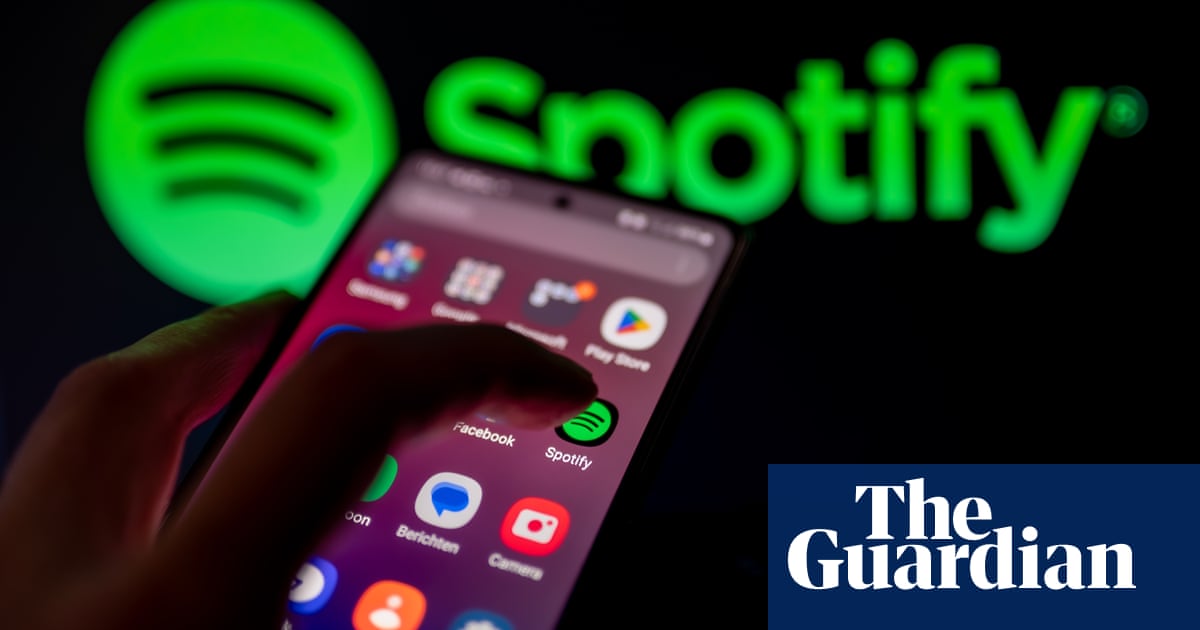Australian music is thriving on the world stage but new research shows it is fading fast from local playlists and charts.
Only 8% of the top 10,000 artists streamed in Australia in 2024 were Australian, an analysis in a Creative Australia report finds. According to one of the report’s key researchers, Christen Cornell, it takes local music consumption to an “historic low”.
Yet at the same time Australian artists are making waves internationally, with 80% of Spotify royalties for Australian artists now coming from overseas.
“Exports are booming, with artists like the Kid Laroi, King Gizzard & the Lizard Wizard, Amyl and the Sniffers and Vacations leading the charge,” Cornell said.
Sign up for Guardian Australia’s breaking news email
“It shows us this isn’t about quality, it’s about visibility. And we’re risking missing out on our own success story.”
The secondListening Inreport, building on an earlier report released by Creative Australia in April, highlights how globalisation and streaming are reshaping an industry that no longer measures consumption based on what we buy but what we listen to.
The three-part study, with collaboration by independent music company Untitled Group and not-for-profit youth music organisation The Push, drew on more than 10,000 responses across four surveys, additional focus groups with a heavy emphasis towards Australians 25 and under, and trend data from Nielsen over the past five years.
Analysis of Aria charts, national polls such as Triple J’s Hottest 100 and independent research by music industry professional and academic Tim Kelly were also used, revealing comprehensive trends in the way Australians are consuming music and how they feel about it.
Millie Millgate, the director of Creative Australia’s Music Australia, said the research showed that while Australians may claim they love local music and want to hear more of it, there is a clear gap between sentiment and action.
While 71% of respondents said they felt proud when they heard Australian music, and 66% wanted to hear more, only one-third actively sought it out – on streaming platforms such as Spotify (the most popular streaming platform), YouTube (the most popular platform for discovery) and Apple Music, as well as at music festivals, live events and through word-of-mouth.
“If we want a thriving and sustainable music industry in this country, we all need to do our bit to actively seek out and support local music,” Millgate said.
“What’s at stake is not just the ability of emerging local artists to break through – it’s the future of a music industry that reflects who we are, tells Australian stories.”
The report found that listeners are increasingly defaulting to American music, which is now, as in many other English-speaking markets such as the UK, Canada and New Zealand, dominating Australia’s charts and playlists.
Ambivalent attitudes towards the algorithms used by streaming platforms, and the role these algorithms play in determining what Australians are listening to, was a consistent issue raised by respondents.
“Many expressed a kind of appreciation for the fact that the algorithm will navigate through an incredible amount of material and do the work for them … but then there’s also an acknowledgment and expressed concern that this is making it difficult for new artists to break through,” Cornell said.
“Some people talked about trying to break the algorithm, or setting tasks for themselves not to use the algorithm being imposed upon them. But at the same time, there were plenty who are acknowledging that it’s a ‘tedious task’, trying to work against a system which is making your life more convenient.”
According toa 2024 analysisby US music industry platform MusicRadar, more music was released in a single day that year – an average of 120,000 new tracks were uploaded to streaming services daily – than during the whole of 1989.
“Algorithms are partly responsible but it’s also just the sheer amount of music that is available that has led to this situation,” Cornell said.
“It’s not just the entire world that is available through your streaming platform, it’s all the music that has ever been released, which is why we’re seeing the Beatles and Fleetwood Mac back in the charts.
“These factors make it really difficult for new local artists to break through.”
Models used in non-English-speaking nations such as France, Brazil and South Korea, where local music consumption is on the rise, were examined in the report.
Such countries had deployed national curation strategies, including locally specific streaming platforms and support for domestic artists.
More than 40% of Australian respondents said they would pay for an Australian-only streaming service, Cornell said, with First Nations participants, young people and regional Australians the most enthusiastic.
